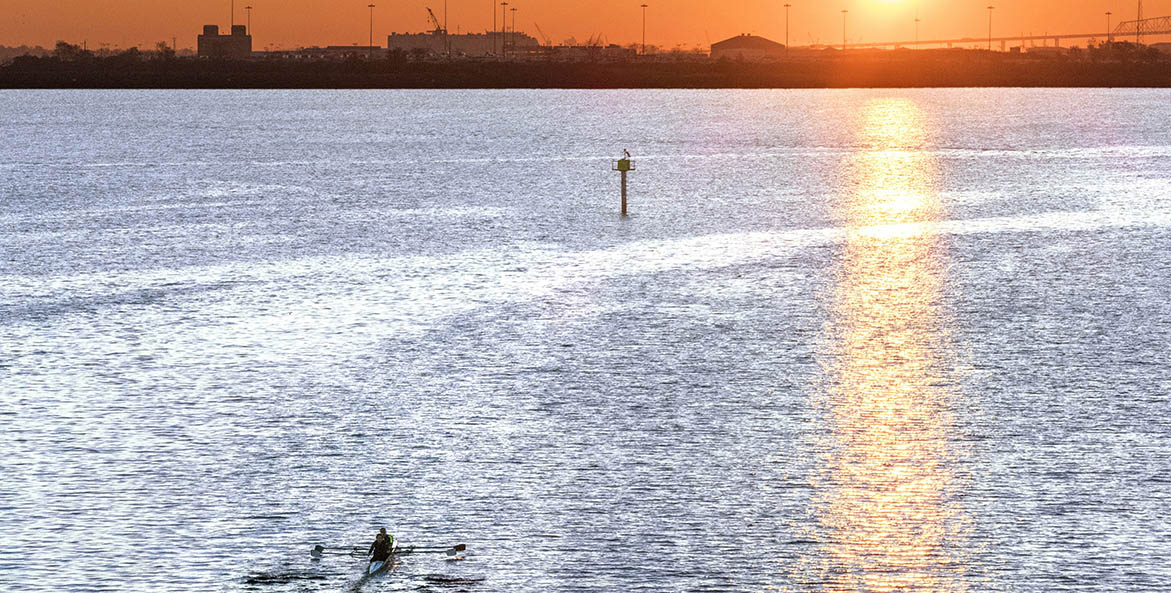The following was first published in The Baltimore Sun.
The largest increase in federal funding for Chesapeake Bay restoration in recent memory is quickly headed to on-the-ground projects where communities need them most. The announcement from U.S. Environmental Protection Agency officials earlier this month is cause for celebration, and reason to take careful note of what works.
The Chesapeake Bay and the 18 million of us who share its 64,000-square-mile watershed face interconnected challenges. Far too much pollution still washes into our waterways each year. Rising temperatures and storms supercharged by a changing climate are altering the bay and the places we live and work in unprecedented ways. Persistent environmental injustices mean some neighborhoods and communities disproportionately pay the price of pollution and weather extremes in costs to health, homes, and livelihoods.
Solving these challenges requires sticking to decades of science and the long-term plan to reduce pollution in the bay—the Chesapeake Clean Water Blueprint—which has a 2025 deadline. For the plan to work, we'll need to urgently ramp up actions that reduce pollution. To create a healthy watershed for all of us, we'll need to do so in a way that puts people's real-life experiences of pollution and climate change front and center.
That's exactly what this new funding does. Thanks to the steadfast dedication of members of Congress from Maryland, Pennsylvania, and Virginia, $40 million from the federal Infrastructure Investment and Jobs Act will flow this year into competitive grants that leverage federal funds to support community-based restoration efforts. More will follow over the next four years.
The grants fund on-the-ground projects across the watershed, many of them led by community groups, faith organizations, and educational institutions. Not only does this get resources directly in the hands of those doing the work, but communities can find adaptive and creative solutions that address multiple needs and work best for their unique circumstances.
A great example of the cascading value of these projects is right here in Baltimore.
Gwynns Falls, a river that flows through west and South Baltimore into the Middle Branch of the Patapsco River, is degraded by pollution and does not meet water quality standards. Communities in the Gwynns Falls watershed are also vulnerable to flooding. A devastating storm in 2018 damaged 140 homes in the area around Frederick Avenue and inundated some places with 8 feet of water.
The floods coincided with a growing interest at three congregations in the Gwynns Falls watershed to steward their properties in a way that cares for the environment as well as the community. Stillmeadow Community Fellowship is creating a PeacePark on its 10 acres of land that will restore an urban forest and create a space for community healing, education, and fellowship. Upstream, Miracle City Church and the Islamic Society of Baltimore are each pursuing plans to reduce stormwater runoff that contributes to floods and pollution through projects like tree plantings, the removal of impervious surfaces, and the installation of green infrastructure like cisterns and bioretention areas.
All three projects are supported through the One Water Partnership, a program of Interfaith Partners for the Chesapeake that connects congregations throughout the Chesapeake Bay region in a cohesive effort to restore water quality and quality of life in their communities. Leaders at each congregation found that what started as a desire to take care of their own backyards has grown into a continuing cycle of greater community education, engagement, and connection—between people and nature, between neighbors, and between partnering groups who are connected by a common purpose.
These are the kinds of partnerships and projects we need for bay restoration to succeed while creating a watershed that works for all of us. They reduce pollution to the bay and provide direct benefits to communities. And they're money well spent. The One Water Partnership secured matching funds that more than doubled the impact of the federal dollars it received from its grant last year, putting over $2 million toward on-the-ground restoration.
That's why CBF and our partners will continue to push hard for full funding for the federal Chesapeake Bay Program, and urge the program to continue to channel the vast majority of those dollars into on-the-ground restoration led by communities.
Since restoration began, we've collectively reduced the amount of pollution flowing into the bay by a third, even as the number of people living in the watershed grew by half. We still have a lot of work left to do in a short amount of time. Investments like these are key to creating a restored, resilient watershed now and for the future.




